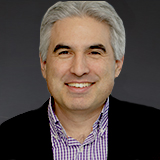Commodity’s compass: guiding the future’s sustainable mining projects
Market and shareholder profits generally force very short-term thinking for mining companies. Next quarter. Next year. Next five years. But the legacy of these mining projects goes well beyond any one person, any one shareholder, or any one executive. It extends beyond generations of people and so we need to think of these projects in an entirely different way.
We’ve been thinking a lot about how to help our clients achieve this new balance. We’ve put a lot of time and effort over the years into focusing on the technologies. How they can optimize process and impact the mining flow sheet. But we wanted to look at how we could help generate value along the project path in an entirely new way.
We set out and investigated hundreds of mining projects, looking for those common threads of success. Identifying the fundamental “intensities” that drive a successful project strategy, from construction to operations and closure. We’ve come to a few conclusions. Those things that we think will make or break a successful mining project in the future.
Creating meaningful social value. Two key aspects determine whether or not a project will be successful socially: trust and identity. Does an operation build trust with the community and reinforce its identity? It’s more than how many jobs you can create. It’s about the residual social capital that you leave behind, years beyond the closure and remediation of the mine.
Environmental engineering. Companies are expected now to consider their environmental impact when conceptualizing a mining project. They’re expected to minimize their footprint, lessen their impact, and maximize benefits for the local community. But what we haven’t yet perfected is how to successfully close and remediate a mine in a way that continues to add value for the local community. We’ll do our best with existing projects. But we have a whole new opportunity on our greenfield projects. We need to design, right from concept, how the site will be closed and remediated in a way that benefits the local community, the earth, and the shareholders.
These factors need to become our new compass points. The point from which we decide our direction, from where we lay our path forward.
We’ve already seen a few of our clients have success by incorporating these ideas. Glencore and Tugliq Energy Co. teamed up to install a wind turbine at the Raglan nickel mine in northern Québec, Canada. Not only does the turbine improve sustainability, reduce emissions, and cut costs for Glencore by providing an alternative to expensive diesel fuel, but it could have transformative impacts across northern Canada, paving the way for more widespread adoption of green energy alternatives. The project uses Hatch’s proprietary Microgrid Controller technology to monitor demand for wind power and smooth out variations in transmission to displace diesel generation. It’s one of the first times that a fully developed and tested wind power and storage system was implemented in the North and proves that it could be replicated in Indigenous communities and other remote, cold-weather operations in the future.
Our dream is to help a mining company define a whole new paradigm for how to operate. To figure out strategically how to build the project, how to operate the mine, and how to close it in a way that adds more societal, environmental, and financial value than we've ever seen before. We are convinced it can be done and look forward to the challenge.
